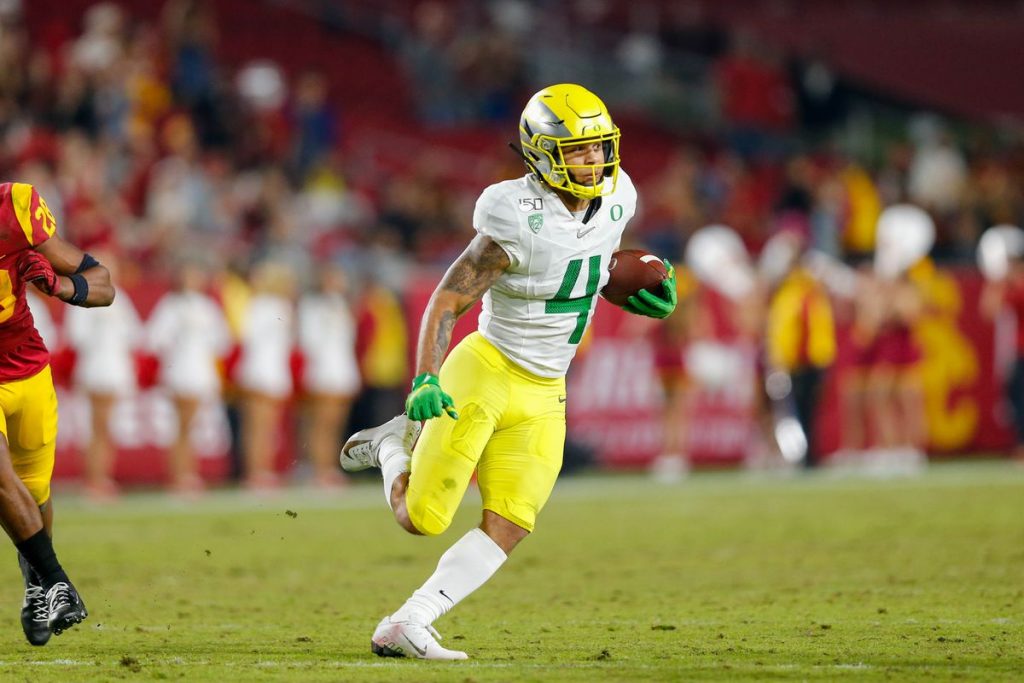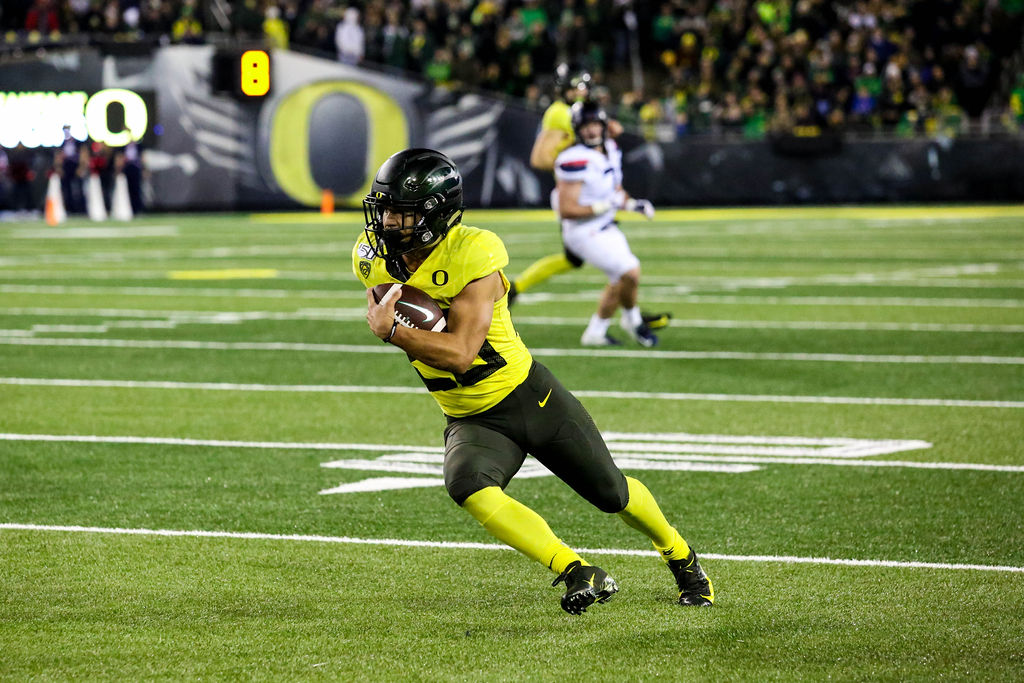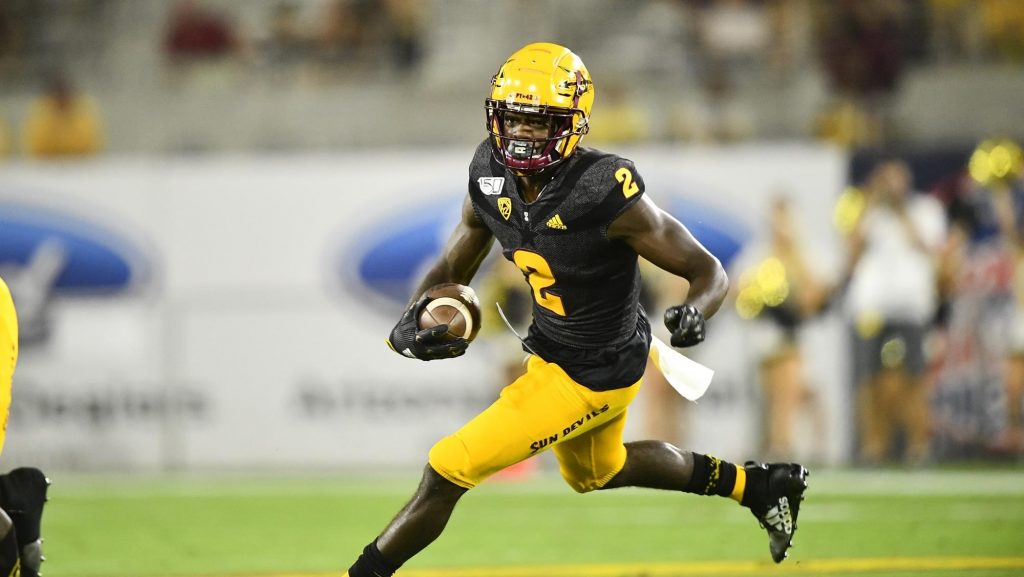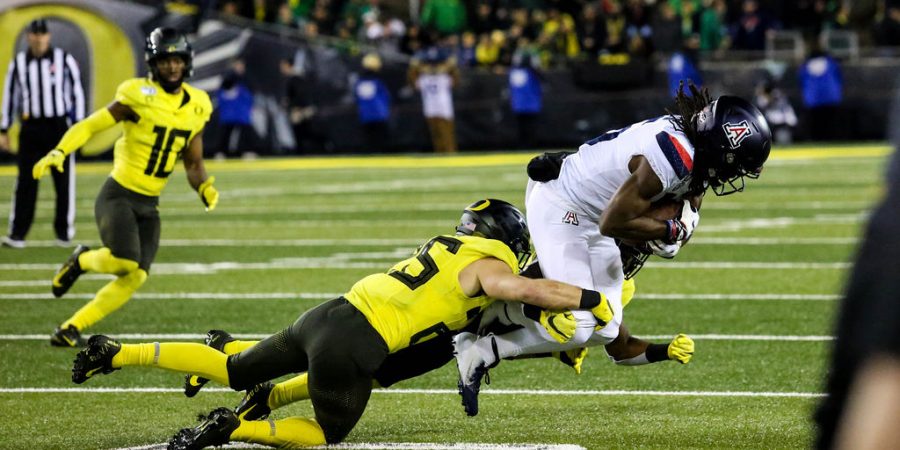It’s official: We’ve formally reached the “Please don’t screw this up” portion of the Oregon football schedule.
Roughly three months ago, that would have seemed like a borderline preposterous thing to say, especially considering the growing momentum Arizona State had seemingly been gaining under the direction of head coach Herm Edwards the year before. However, a strong 5-1 start to the season has been promptly followed by four straight losses, removing some (though certainly not all) of the doubt surrounding the Ducks’ chances at victory as they embark on their final true road trip of the season against a Sun Devil side seeking bowl eligibility.
With both teams having plenty to play for and little to no margin for error in order to reach their respective and hopeful postseason destinations, WFOD takes a look at the biggest questions facing Oregon as they look to notch their 10th win of the season.

1. How much will the absence of Mycah Pittman be felt?
A significant injury has once again compromised Oregon’s depth at wide receiver, as it was officially announced Monday that true freshman Mycah Pittman would miss approximately six weeks due to a ghastly arm injury suffered this past weekend vs. Arizona. The injury to Pittman is another unfortunate twist in what was supposed to be a breakout debut season for the former four-star prospect. After drawing no shortage of buzz this spring and summer, Pittman appeared primed to lock down a potential starting job at wide receiver before a shoulder injury suffered midway through fall camp sidelined him until early October.
Pittman would go on to appear in six games, flashing the impressive hands and ability after the catch that made him such a prized recruit, though he would do so taking more of a backseat role to Johnny Johnson, Jaylon Redd, and the rapidly emerging Juwan Johnson. Still, the injury to Pittman leaves the Ducks an injury away from being perilously thin at an already thin position. As things stand now, Oregon should be able to get by with a group comprised of the two Johnsons, Redd, Bryan Addison, Josh Delgado, Daewood Davis, and Spencer Webb, thus don’t expect Pittman’s absence to be overwhelmingly palpable in the immediate term. But should the Ducks suffer some knocks this weekend at wide receiver against a physical ASU defense, this could easily become a far more pressing concern.

2. Can Oregon find a way to run on this tough ASU defense?
It doesn’t figure to be easy. For all their struggles this season, Arizona State’s defense, and in particular its run defense, has been a formidable group that hasn’t surrendered much to opposing running games. Currently ranked third in the Pac-12 in rushing defense (109.3 yards/game), the Sun Devils have proven to be a group that is both physically and schematically capable of stuffing teams on the ground, allowing just two opponents (Utah and UCLA) to rush for over 150 yards in a single game.
Oregon, on the other hand, currently boasts the third-best rushing offense in the Pac-12 (179.8 yards/game), though it’s hard to argue that this has been a consistently steady component of the Ducks’ offense throughout the season. Breakout performances in Pac-12 play against Cal (190 yards rushing), Colorado (252), and Washington State (305) have been balanced out by lackluster outings versus Stanford (61), USC (139), and Arizona (138). And of those latter three teams, Stanford tops the group with the Pac-12’s 7th-ranked rushing defense (148 yards/game). In short, there hasn’t been any obvious rhyme or reason for the Ducks’ inconsistencies rushing the ball this season. Given this team’s talent and experience along the offensive line, perhaps the most logical explanation is that this group is guilty of playing up and down to its competition, though that shouldn’t exactly provide Oregon fans with any level of comfort heading into this game. If engaged, the Oregon offensive line should be able to win their fair share of battles in the trenches against the Sun Devils. If not, it could be a grind it out kind of day for the offense.

3. Can the Ducks replicate the success Utah had in bottling up Brandon Aiyuk?
The Ducks certainly have the talent in the secondary to make life difficult for Brandon Aiyuk on the outside, but then again, few players are built like the Sun Devils’ leading receiver. At 6-foot-1 and 206 pounds, Aiyuk is sturdily constructed with explosive athletic ability, which has been on full display en route to 53 catches for 964 yards and seven touchdowns through 10 games this season. Though it’s worth pointing out that Aiyuk’s most dominant performances (excluding his 140-yard, one-touchdown day vs. Kent State) have come against Pac-12 teams that rank in the bottom half of the conference in passing defense (Colorado, Washington State, Oregon State). Against all other Power 5 opponents, Aiyuk has failed to gain more than 82 yards through the air in a single game, as UCLA (the Pac-12’s third-worst pass defense) represents the high mark of those remaining teams. In fact, against Utah, which boasts the top ranked passing defense in the Pac-12 (193.2 yards/game), Aiyuk was limited to just one catch for seven yards.
Next to Utah, Oregon possesses the next best thing in the conference when it comes to defending the pass, as the Ducks rank second in the Pac-12 in the category (205.2 yards/game). Moreover, the Ducks have been at their best when they have faced some of the top receivers the conference has to offer. Against Colorado’s Laviska Shenault, the Ducks limited the Buffs’ talented pass catcher to just 70 yards on four receptions. Against USC’s Michael Pittman, Jr., Oregon was effective once again, holding the Pac-12’s leading receiver to eight catches for 37 yards and one touchdown. Aiyuk has proven to be a handful when he has gotten his opportunities, but the Ducks have similarly demonstrated that they aren’t a group to be phased by the talent they expect to face.
Top Photo: A pair of Oregon defenders converge to make a tackle (Jenny Rydstedt/Whole Flock of Ducks)

